- Administrator
- Albums and Singles
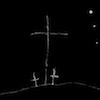 Considering this new album has arrived so soon after David Tibet had finished his Aleph trilogy, it is not a shock to find that it essentially continues from where Baalstorm, Sing Omega left off. However, where Baalstorm, Sing Omega was vibrant and colorful like a decadent religious feast bathed in sunlight, Honeysuckle Æons is a night album; the yawn of a night sky speckled with stars and celestial bodies. The rock excess has dissipated and in its place Tibet returns to the introspective poet last encountered on Soft Black Stars and Sleep Has His House.
Considering this new album has arrived so soon after David Tibet had finished his Aleph trilogy, it is not a shock to find that it essentially continues from where Baalstorm, Sing Omega left off. However, where Baalstorm, Sing Omega was vibrant and colorful like a decadent religious feast bathed in sunlight, Honeysuckle Æons is a night album; the yawn of a night sky speckled with stars and celestial bodies. The rock excess has dissipated and in its place Tibet returns to the introspective poet last encountered on Soft Black Stars and Sleep Has His House.
This introspection is not restricted to Tibet, the sprawling cast that was Current 93 of recent years has been reduced to a handful of players. Baby Dee returns to the piano stool, her playing poised somewhere between her usual music hall style and Maja Elliott’s raven-like playing on Soft Black Stars. As well as piano, Dee also plays some terrific organ on "Jasmine" and, on "Honeysuckle," she picks up on the carnival organ theme explored briefly on the last album (although with far less violence this time). Dee’s piano is paired with a mournful theremin, Armen Ra operating the ghostly synth with a control that is so often absent from the instrument. The theremin adds to the nocturnal atmosphere, there is something pitch black about its tone; it sounds like a gap between the stars.
Baalstorm’s African and Middle Eastern flavors are also reprised as Eliot Bates makes a return appearance, playing both melodies on the oud and percussion on the bendir and erbane. His gorgeous contributions are enhanced by the inclusion of the kalimba (played by Lisa Pizzighella). There is a split running through the songs on Honeysuckle Æons, roughly half of the songs based on the piano or organ and the rest centered on the oud. At first, it made Honeysuckle Æons feel fractured, like two different albums half made and half finished. Yet, as I listen to it again and again (and especially after dark), I realize it all works together perfectly. The organ and the traditional instruments link together like the different aspects of the faith explored by Tibet in his lyrics; the more modern rituals of Christianity linked back to the original ideas seeded in the Coptic texts that Tibet has taken such inspiration from. This linkage is helped by Andrew Liles' treatments of the music and words (subtle but there) and his job mixing the album; as disparate as the piano- and oud-based songs could be, he makes them feel like different sides of the same instrument.
Looking more closely at the lyrics, Tibet has taken the same ideas that ran through the Aleph trilogy but condenses them into an even more apocryphal and apocalyptic tale. Yet where there was drama and excitement in the Aleph trilogy, here he brings it back down to a personal and spiritual oblivion ("Stripped back to the real me"). His singing reflects the music’s gentle but insistent push; the screaming and the shouting have given way to realization and acceptance. That is not to say that the eschatological leaning of Tibet’s words is gone, the album is peppered with these references (everything from the "Bloodface" of Black Ships Ate the Sky to allusions to Milton’s Paradise Lost). Now these references seem to be almost psychological, not the actual Armageddon of this world but of Tibet’s world.
This more sedate and solemn version of Current 93 makes sense in the context of the year that was for Tibet. Change in the form of death, both Sebastian Horsley and Peter Christopherson’s passing left their mark on Tibet, and in the form of a new beginning as he embarks on a new phase of his academic career in Coptic studies. Events like these make you take account of your life in their own way and Tibet has put these feelings into Honeysuckle Æons rather than a diary. Like Sleep Has His House was a requiem for his father, Honeysuckle Æons is a goodbye to lost friends and a hello to the future.
samples:
 
Read More
- Administrator
- Albums and Singles
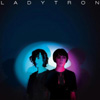 While the term electroclash came in and out of style almost instantaneously, only a small number of the groups lumped together under that umbrella had the ability to continue on past one or two albums. Ladytron have since proven their ability to create brilliant hooks and infectious songs (as evidenced on this collection) long after many of their contemporaries of 1999 and 2000 dissolved.
While the term electroclash came in and out of style almost instantaneously, only a small number of the groups lumped together under that umbrella had the ability to continue on past one or two albums. Ladytron have since proven their ability to create brilliant hooks and infectious songs (as evidenced on this collection) long after many of their contemporaries of 1999 and 2000 dissolved.
The album plays like a concert, songs are not in any chronological order but sound like a set list, with a strong opener, some valleys, peaks, and a strong closing. Additionally, the curator managed to squeeze as many songs as possible into the space allowed on the conventional compact disc. Best of 00-10 is available in both a single and double CD set as well as for digital download, which is beneficial for those of us who don't want to throw down the money to buy the same songs all over again.
The songs on disc one (or the standard release) are strategically chosen, opening with their massive "Destroy Everything You Touch" from 2005's Witching Hour and ending with two brand new recordings, a knockout shocker of a cover of Death In June's "Little Black Angel" (mad props from the Brainwashed crew!) and the new song and single "Ace of Hz." Disc two, while less essential, has plenty of other strong favorites like Velocifero opener "Black Cat," "Mu-Tron," from 604, and the adorably sweet ballad "All the Way," from Witching Hour in addition to the rare instrumental noisy Light & Magic bonus track "USA vs White Noise," which could easily be a tribute to their once contemporary (and equally nerdy) Add N to (X).
In 2000 Ladytron was all over the college radio airwaves with songs like "Playgirl," "He Took Her To a Movie," and "Discotraxx" from 604, which wasn't as much of a debut album as it was a collection of music recorded between 1997 and 2000. I'm disappointed that this collection neglects the single and fiercely popular track "He Took Her To a Movie," (probably because it sounds quite dated by now) as well as the brief but rare lead ditty on their Japanese only EP, Miss Black and Her Friends, "Miss Black." It also avoids the catchy tune "Sugar," which was a strong single and had a great music video to go along with it.
The versions of songs like "Seventeen" and the incredible "Runaway" are the original full-length LP versions, so whoever compiled the collection didn't seek the more concise "radio edit" single versions of the songs. While this is acceptable, it makes this a rather lazy "best of," as nobody made the effort to consider that fans don't want to buy the same versions they already own and new listeners can latch on easier to a version that is more direct and to-the-point. While Ladytron have mastered the riff, they do have a tendency to overplay it a few too many times and wear out their welcome, especially on "Deep Blue" and the aforementioned "Seventeen."
To be honest, this set reeks of a record label who bought the rights to their back catalog, freshly eager to reissue each original album, as it sounds more like a sampler than a true hits or singles album. It's a decent introduction for a new listener who showed up to their concert and wanted to leave with only 1 item that best represented their concert experience, however any true fan will realize the sloppiness of the package. Even though the deluxe version comes with an 80-page booklet of photos and such I would much more prefer disc two to have been a DVD compilation of all their music videos, however, as there's no true quintessential show-stoppers on disc two.
samples:
Read More
- Administrator
- Albums and Singles
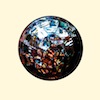 There have been few albums that I remember waiting so impatiently for. Several years have gone by since Clodagh Simonds' first transmission under the Fovea Hex umbrella and finally a full length has appeared. Continuing on from an exceptional string of EPs and singles, Here is Where We Used to Sing finds Simonds and her ever shifting group exploring different aspects of their songwriting process. With more focused lyrics and more defined melodies, their music has solidified and began to sprout sharp, beautiful forms like crystals grown in a petri dish: equally perfect and fragile.
There have been few albums that I remember waiting so impatiently for. Several years have gone by since Clodagh Simonds' first transmission under the Fovea Hex umbrella and finally a full length has appeared. Continuing on from an exceptional string of EPs and singles, Here is Where We Used to Sing finds Simonds and her ever shifting group exploring different aspects of their songwriting process. With more focused lyrics and more defined melodies, their music has solidified and began to sprout sharp, beautiful forms like crystals grown in a petri dish: equally perfect and fragile.
After waiting so long for a full album from Fovea Hex, I must admit I had some trepidations about Here is Where We Used to Sing. What made the three EPs that made up Neither Speak Nor Remain Silent was their blend of song craft and a loose, magical slipping of the sounds through the cracks in the melodies. The same alchemy did not seem to permeate Here is Where We Used to Sing to the same extent; the main album is very much anchored to the piano and the more experimental sequences are saved for the bonus disc, Three Beams. Initially, I was perturbed by this segregation of what I felt to be Fovea Hex's defining feature but the more I listen to the album, the more I fall in love with it. The shifts and wobbles are still there but they are subtler now, a deeper engagement with the music is needed.
It is not just the music that has a poetic depth to it, the renaissance of mysticism in Ireland in the early 20th century by the likes of W.B. Yeats and Æ finds a descendant in Simonds' words (both now and throughout her career). Simonds' lyrics at once capture the ordinary in all its vivid realism and also the layers on top of this normality that fill out a dull scene into an astonishing and beautiful epiphany. A fitting example being these lines sung by Laura Sheeran on "Falling Things (Where Does a Girl Begin?)":
"You might recall some sunny day this other day of falling things
Raising your face… And then I might fall calling your name as I'm streaming by."
The music and the words come together as a powerful concoction, soporific and hypnogogic. This is particularly true of the album’s stunning centerpiece, "A Hymn to Sulphur," which marries Simonds and Sheeran's sea-drenched vocals with a tidal rhythm of e-bowed guitar, strings, and piano. An intermittent piano pulse played on the higher notes sounds like a submarine's sonar, completing the oceanic setting. On the violin and cello respectively, Cora Venus Lunny and Julia play with a power and grace that illuminates the other elements of the song, highlighting and accentuating the vocals in particular.
The remainder of Here is Where We Used to Sing is no less sublime. Short instrumental pieces punctuate the album and Michael Begg and Colin Potter both help create these little tableaus (as well as adding to the main songs), their touch apparent but not heavy. Their contributions involve blurring the boundaries within the music; instruments seep into each other and form new, striking shapes. Other previous Fovea Hex collaborators reappear throughout the album, Brian Eno and Fabrizio Palumbo both being particularly noteworthy for their ethereal electronics and guitar respectively.
Begg, Potter, and William Basinski rework the recordings on the Three Beams disc and all three come up with startling results. Both Begg and Basinski create haunting, abstract soundworks out of the raw materials. Begg takes the strings and turns them into shooting stars, it feels like the notes are hurtling past my ears. On the other hand, Basinski's treatment of the music sounds more like glass birds in a giant, reverberating aviary. However, it is Potter's contribution that captivates me entirely. Moving on an arc through the album's rich ingredients, he is the only one of the three to use the vocals as a central point in his own composition. Potter's construction of the music gives the whole piece a bell-like character; he picks up on the music's resonances and expands the songs into vast stretches of glorious space. When Simonds and Sheeran call out through the ether, it feels like a bolt of lightning from God.
While I never expected to be disappointed with Here is Where We Used to Sing, I also never expected it to confound my expectations to this degree. I feel like I still have only scratched the surface of this work; like the Neither Speak Nor Remain Silent EPs, this is an album that will keep revealing secrets with every listen.
samples:
- A Hymn to Sulphur
- Still Unseen
- Cup of Joy (Colin Potter)
 
Read More
- Administrator
- Albums and Singles
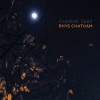
At first glance, this seems like a risky proposition: Rhys Chatham, the visionary avant-garde composer known for arranging vast, expansive symphonies with 100+ guitars, has released a record made primarily with trumpet and voice. He hasn't recruited 100 trumpets and 100 voices, either—simply his own. Hell, I didn't even know Chatham played the trumpet until recently...
The truth, it turns out, is that Chatham has been playing the trumpet for nearly three decades. Feeling he had reached the limits of his creativity on guitar by the mid-1980s, Chatham began developing his voice on the trumpet, practicing only in private for the first decade. In 1993, he made his switch public, seeking collaborators to flesh out his ideas, and a few years later released a lone EP, Neon, with midi-programming whiz Martin Wheeler. (For those interested, Chatham details his long history with the trumpet in his fascinating 1998 essay, Why I Switched to Trumpet—a thoughtful, academic piece well worth a read.) This was all news to me, and as a huge fan of Chatham's innovative guitar work, my interest was piqued.
As can be expected, Chatham's trumpet playing is not virtuosic in the usual sense of the term; he would likely not fare well in a skills test versus, say, Louis Armstrong or Miles Davis. That is not to say that Chatham's trumpeting is without merit, especially given that he aims for something wholly different than his jazz predecessors. As with guitar, he brings a set of personal influences to the trumpet—atonality, minimalism, repetitive rhythms, and a strong emphasis on texture—that render his playing unique. Outdoor Spell is Chatham's first album-length release of mostly solo trumpet recordings, and it's a mixed bag with a couple stellar tracks and a couple throwaways.
The fantastic title track opens with a subtle, hypnotic drone that builds slowly throughout the piece. After two minutes, the first recognizable trumpet sounds appear—a single note at first, then many more—looping over one another, some of them fizzling into the background, others foregrounded. Chatham builds on this basic template for seven minutes; the drone and his trumpet playing then fade out. It is a subtle, confident piece of music that functions equally well as background ambience or, at loud volume, enveloping incantation, and the style is Chatham's own—layer upon layer of trumpet and voice, looped unto infinity, a paean to the gods of minimalist repetition that he invoked on "Guitar Trio," though by wholly different means. Moreover, the music shimmers and breathes, with subtle shifts in texture and harmonics that emerge beautifully on headphones.
The next two pieces introduce elements that may begin to yield fruit as Chatham explores his voice on trumpet, but are not presently as transcendent as "Outdoor Spell." The percussive, marching-band aesthetic that opens "Crossing the Sword Bridge of the Abyss" (and dominates most of its overlong 18 minutes) becomes irritating as the sounds start to resemble, quite honestly, flatulence. At times, the piece fares better when Chatham fades out the rhythmic elements mid-track and lets his trumpeting take center stage. "Corn Maiden's Rite" is essentially the shorter, more developed cousin to "Crossing the Sword Bridge"—atonal trumpet lines weaving in between scattered hits of percussion, a high-pitched squeal looming in the distance. Collaborator Beatriz Rojas guests on cajón.
The true outlier is "The Magician," which sounds like an improvisational studio session where Chatham throws the structural guidelines that permeate his better-known work out the window. Unlike his textural blowing on the rest of the album, Chatham's playing is more traditionally virtuosic than before, resembling a number of free-jazz luminaries he has mentioned were influential to developing his own style—not least among them Don Cherry, who served as Ornette Coleman's premier trumpeter during the late '50s and early '60s. Chatham also recruits Jean-Marc Montera on electric guitar (rather than simply play guitar himself—quite the statement!) and Kevin Shea on drums, who provide a lively, shifting foundation for Chatham's trumpeting. Altogether, "The Magician" is a fine end to Outdoor Spell—a flawed album bookended by two tracks well worth a listen for Chatham and trumpet acolytes alike.
Samples:
Read More
- Administrator
- Albums and Singles
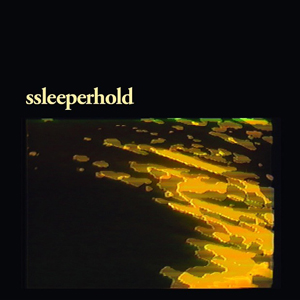 SSLEEPERHOLD's José Cota initially gained attention as part of the now dissolved Medio Mutante, but here he is working strictly solo. Still utilizing a largely synth based template, he touches upon abrasive late 1980s industrial, laconic soundtrack-like ambience, and a bit of everything between in these eight instrumental songs.
SSLEEPERHOLD's José Cota initially gained attention as part of the now dissolved Medio Mutante, but here he is working strictly solo. Still utilizing a largely synth based template, he touches upon abrasive late 1980s industrial, laconic soundtrack-like ambience, and a bit of everything between in these eight instrumental songs.
Cota sticks to a mostly basic arrangement across this LP, usually relying upon a rigid drum machine, electronic bass line, and bits of melodic synth or tape manipulation to bring in some less predictable elements.On the opening title piece, the hollow and distorted drum machine and brittle bass sequence have the expected rigidity, but are broken up by shards of noisy electronics and processed tapes to put a distinctly more grimy edge on such sounds.
"F.I.S.T.," with its metal edged reverberated synth and clattering drum machine, instantly called to mind Corrosion/Disorder era Front Line Assembly, in the best possible way.The militaristic and aggressive programming paired with the unpredictability of the older electronics was a definite throwback to that era that time and technology has seemingly left behind."Beatsslave" has a similar sense to it, albeit with a glassy synth line makes it a bit more of a melodic experience.The fast paced, testy drum machine and frequent build up/tear down structure adds to that aggressive sense, however.
"Timeghosts" puts these same building blocks together in a very different way, however.The synthesizers take on an almost regal, dramatic sound atop a squelchy bassline, and the result lies somewhere between Tangerine Dream and a cop movie soundtrack."Dreamwaves II" has a similar approach, although its deliberately 1980s sound feels firmly tongue in cheek, putting together the closing credits theme to a Miami Vice spinoff that never happened.
Cota's liberal use of effects and tape trickery puts an idiosyncratic, unpredictable edge into a sound that more and more artists are latching on to.Rather than locking himself into the initially unbending minimal wave sound and structure, his use of improvised and raw elements goes a long way.The result is a record that is closer to the artists so many are trying to emulate, rather than ending up like one of the many that time forgot.
samples:
 
Read More
- Administrator
- Albums and Singles
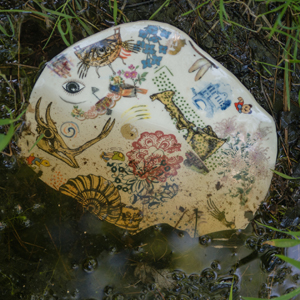 Most of my familiarity with Bullock’s work involves his compositions for contrabass, performed in his own distinctive style with the results being anything but conventional. On this LP, however, he puts the emphasis on modular synthesizers and electronics, with the bass and field recordings appearing on half of the album and even then through heavy processing. The result is a unique pair of works that both show his strength in composition as well as improvisation.
Most of my familiarity with Bullock’s work involves his compositions for contrabass, performed in his own distinctive style with the results being anything but conventional. On this LP, however, he puts the emphasis on modular synthesizers and electronics, with the bass and field recordings appearing on half of the album and even then through heavy processing. The result is a unique pair of works that both show his strength in composition as well as improvisation.
While "Trompettes Marines" is based off of a live improvisation from 2010, the version here is an entirely new and fully realized recording that blends all of the elements Bullock works with into a single complex composition.Initially heavily focused on wispy bits of sound that move like passing spirits, the abstract tones begin to gel together more structured and almost melodic, slowly building the depth of the piece.
This calm is broken by what sounds like amplified and processed cars passing, leading to a dissonant rush of sound for a brief interval before settling down again peacefully.Sampled vinyl crackling appears to concoct a more intimate, texture laden sound about midway through.Towards its conclusion, recording of the seaside and the use of contrabass and electronics conjure up a markedly foggy, maritime like ambience that is only missing the smell of sea air and the cold, blustery winds of the New England coast.
In comparison, the title composition on the B side of the record is a bit more skeletal and sparse, heavily utilizing sustained analog electronic tones throughout.Which makes perfect sense, being that the piece was built mostly from a self-generative modular synth patch with very little direct input from Bullock after the initial set up. The analog waves mimic bowed strings well, and the occasionally sharp, shrill outburst or passage highlight the delightfully unpredictable nature of non-digital technology.Between this and the fact that Bullock did little in the way of post-production or mastering after the fact makes this all the more impressive.It may seem a sparse and more loosely structured in comparison, but considering how it was created, it is still a very impressive feat.
I must admit to favoring "Trompettes Marines" a bit more for general listening purposes, as its diverse structure and more complex instrumentation shine.Bullock’s merging of such distinct sound sources (purely electronic, traditional, and incidental sounds) come together splendidly."Figures Without Ground" is especially impressive given how it was created, but its sparser, more stripped down nature makes for less to dissect.Both sides of this record are rich with subtlety and understated brilliance.
samples:
 
Read More
- Administrator
- Albums and Singles
 The large majority of Brooklyn based Zs' output consists of their work as a sextet—a varied body of work focused around rhythmic intensity and textures based on duality. To reexamine the group's early recordings is to make a sonic map of the changing attitudes of New York new music and how the talent in the area learned to hybridize their surroundings and their musical skills. In that sense, Zs are the New York avant-garde personified; their role as a bridge between loft bands and chamber musicians, lo-fi and "high art" represents a lot of the essential artistic ideologies in 21st century New York.
The large majority of Brooklyn based Zs' output consists of their work as a sextet—a varied body of work focused around rhythmic intensity and textures based on duality. To reexamine the group's early recordings is to make a sonic map of the changing attitudes of New York new music and how the talent in the area learned to hybridize their surroundings and their musical skills. In that sense, Zs are the New York avant-garde personified; their role as a bridge between loft bands and chamber musicians, lo-fi and "high art" represents a lot of the essential artistic ideologies in 21st century New York.
My adoration for Zs began with New Slaves. Back in 2010, playing that record on a whim was one of those rare, identifiable "eureka!" moments, where I had decided immediately that I discovered something truly new. Zs struck me as a group who had cemented themselves as a unique presence through sheer hard work, combining the chops of conservatory musicians with the progressive attitudes of the modern New York scene.
Going back through their work, I was stunned to find that the group had existed in some form or another for over ten years. I had to catch up on a decade's worth of some of the most forward-thinking artistry to evolve from the Brooklyn experimental scene. Plus, the group had an output consistent enough to justify the band's lengthy career and roster changes; Zs has gone through over ten lineups and a fair amount of dynamic shifts in personality. The only constant member is saxophonist Sam Hillmer, with past players including Alex Mincek, Ian Antonio, Matt Hough, Ben Greenberg, Charlie Looker, and a few others in shorter tenures.
Score collects over four and a half hours of Zs music, and I can't be happier about it. It includes each recorded album of the band between 2002 and 2007—comprising Zs, the Karate Bump EP, Buck, and Arms—as well as some remixes from Zebrablood (Excepter's Nathan Corbin), outtakes, sketches, bonus songs, and a booklet with photos, sample sheet music, and a previously published essay on the group. The essay actually covers more than the box set itself contains, but as a document for tracking the evolution of Zs' lineup and outlook, it is unmatched. The four discs, meanwhile, capture a band in the throes of a creative outburst; building a sound from scratch, then allowing it to find its niche while simultaneously pummeling its point into your head over and over.
Zs' signature sound might seem a little contrived when experiencing it without context. The basic idea follows: take the rigidity and traditions of conservatory-taught chamber music and apply them, as strictly as possible, to the irreverence of free jazz and avant-garde music. Then, depending on the instruments at play, and the skill of their performers as producers, adjust where necessary. As it happened, Sam Hillmer and Alex Mincek were talented—insanely talented, enough so that this formula blossomed into a whole unique form, instead of being cast off as another high-concept novelty.
Considering how much forethought is at work here, Zs' music is best dealt with song by song. The punctual "thump" sound prevalent in their early work serves as the defining characteristic of the group. What Hillmer calls the "textured jab" is a thematic continuum based on sheet-read abstract rhythms which sets Zs songs up for their more engaging ideas and idiosyncrasies, such as the minimalist textures of "Bump," the collapsing structures of "Olympics," and the angular climaxes of "Pendulum." On its own, the acrobatics of songs like "Woodworking" tend to lull under their own weight, but when applied to different chord progressions and driven by overarching themes, Zs' music produces an uncanny bliss. One of the shining moments for the group is "Nobody Wants To Be Had," a cathartic assault where each member plays in exact unison, chopping up the syllables of a surrealist poem between passages of pounding noise rock.
Arms is still the sextet's opus, where songs like the exhaustive "I Can't Concentrate" conjure (and then mercilessly drown) a whole new language of songwriting in ten or so minutes. Notable is the one glaring misdirection in their otherwise consistent oeuvre, the self-titled "Zs," a composition of pleasant rhythmic undulations and overlapping vocal harmonies highlighting lyrics such as "Zs are a band of mystical bros." The song appears to be a post rock pastiche, although it works surprisingly well as a self-effacing anthem too.
Aside from the prototypes and remixes (which are pleasant and forgettable), what stands out on this compilation is the live material culled from Buck, released back in 2007. It shows off their indisputable skill as live performers, but also finds time to lend their music some well needed levity. Notable moments left in the live versions include the pained preaching of a fan to "give them some fucking money...pass around a hat" on "Pendulum" and the oddly-well-recorded heckling near the end of "Bump," where someone is audibly heard yelling "Slayer!" and "Sheet music rules! Fuckin' college!" to the chagrin of the audience.
In fact, I have come to love Zs more as a group while exploring their old catalog because of their humor in tackling such stringently orchestrated music. Along with the self-titled "Zs," songs like "Retrace A Walk" and "Woodworking" seem pointedly, comically literal, and the band's own lighthearted appraisal of Howard Stern's sarcastic mock-up of their sound ("One of the pieces they did was pretty good") is all too endearing.
Zs began as a collection of individuals with distinctive, angular tastes. These days, it has evolved into a band aesthetic, a studio project, and a conceptual goldmine for minimalist side projects and over sized Playbutton pins. But Score captures where the group earned their stripes: through hard work, constant practice and improvement, a sense of perspective, and a willingness to explore areas of music that few others had the wherewithal to. It has quickly earned a place as one of my favorite releases this year, and I hope that Northern-Spy's dedication to putting it out will mean the same for a plethora of potential fans.
Read More
 The large majority of Brooklyn based Zs' output consists of their work as a sextet—a varied body of work focused around rhythmic intensity and textures based on duality. To reexamine the group's early recordings is to make a sonic map of the changing attitudes of New York new music and how the talent in the area learned to hybridize their surroundings and their musical skills. In that sense, Zs are the New York avant-garde personified; their role as a bridge between loft bands and chamber musicians, lo-fi and "high art" represents a lot of the essential artistic ideologies in 21st century New York.
The large majority of Brooklyn based Zs' output consists of their work as a sextet—a varied body of work focused around rhythmic intensity and textures based on duality. To reexamine the group's early recordings is to make a sonic map of the changing attitudes of New York new music and how the talent in the area learned to hybridize their surroundings and their musical skills. In that sense, Zs are the New York avant-garde personified; their role as a bridge between loft bands and chamber musicians, lo-fi and "high art" represents a lot of the essential artistic ideologies in 21st century New York.
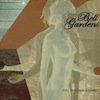 After a terrific debut EP in 2010, Bell Gardens finally return with a full album of mostly new music. As usual, the musical arrangements are lush and saturated with beauty as Brian McBride and Kenneth James Gibson try to recreate the moods and sounds of the golden era of pop studio recordings without using the typical computer-based short cuts and technological workarounds that have become de rigour for modern studio work. The end result is a triumph of song writing, musicianship and integrity, highlighting just how good humble songs can be without the need for following trends or to be striving to be the next big thing.
After a terrific debut EP in 2010, Bell Gardens finally return with a full album of mostly new music. As usual, the musical arrangements are lush and saturated with beauty as Brian McBride and Kenneth James Gibson try to recreate the moods and sounds of the golden era of pop studio recordings without using the typical computer-based short cuts and technological workarounds that have become de rigour for modern studio work. The end result is a triumph of song writing, musicianship and integrity, highlighting just how good humble songs can be without the need for following trends or to be striving to be the next big thing.
- Administrator
- Albums and Singles
 After a terrific debut EP in 2010, Bell Gardens finally return with a full album of mostly new music. As usual, the musical arrangements are lush and saturated with beauty as Brian McBride and Kenneth James Gibson try to recreate the moods and sounds of the golden era of pop studio recordings without using the typical computer-based short cuts and technological workarounds that have become de rigour for modern studio work. The end result is a triumph of song writing, musicianship and integrity, highlighting just how good humble songs can be without the need for following trends or to be striving to be the next big thing.
After a terrific debut EP in 2010, Bell Gardens finally return with a full album of mostly new music. As usual, the musical arrangements are lush and saturated with beauty as Brian McBride and Kenneth James Gibson try to recreate the moods and sounds of the golden era of pop studio recordings without using the typical computer-based short cuts and technological workarounds that have become de rigour for modern studio work. The end result is a triumph of song writing, musicianship and integrity, highlighting just how good humble songs can be without the need for following trends or to be striving to be the next big thing.
Despite the deliberate avoidance of software and samples, Bell Gardens manage to begin the album with a very modern sounding take on the classic pop song. Following some gorgeous slide guitar on "Clinging to the Almost," there is a sudden move into the sort of chord progressions that I would associate with Stars of the Lid or McBride’s solo work. Though Stars of the Lid never sounded like this; the movement and the atmospheres are social, joyous and bright unlike the introspective, contemplative twilight textures of Stars of the Lid. I thought they had nailed it on Hangups Need Company but they have upped their game considerably on Full Sundown Assembly.
The first couple of times I listened to "Differently Tonight" I felt that the lyrics, though performed perfectly, were a bit clumsy. Now, after becoming more comfortable with the album as a whole, I admit I feel differently. The lyrics are so simple that they seemed too obvious but I realize now that is what makes the song work so well. This deceptive simplicity runs throughout the rest of Full Sundown Assembly with songs like "Bobby" and "Nowhere" sounding like the best bits never recorded by Crosby, Stills, Nash and Young or Brian Wilson.
The highlight of the album is "Through the Rain," which also featured on the duo’s Hangups Need Company EP from 2010. Here is the closest they come to sounding like The Beach Boys, the vocal harmonies are rich, layered but as light as they air they are made from. In fact, this is probably the best-crafted song I have heard in a long time as absolutely everything about it is balanced, tasteful and moving. It is a sheer delight to listen to and even though it has already been released, I will not argue with its inclusion here.
In recent years, Bon Ivor and Fleet Foxes have tried to capture this sort of vibe in their respective careers but Bell Gardens truly school them in how it should be done. McBride and Gibson have created stunning bursts of warm, joyous harmonies that, while indebted to great artists such as Phil Spector and Jack Nitzsche, burst with a life beyond retro pastiche. This is masterfully played pop music that references but expands on this nostalgia, much like Tindersticks did in the ‘90s with their take on Nancy and Lee, John Barry and Serge Gainsbourg (though Bell Gardens give the ‘sticks a run for their money on "South"). With Full Sundown Assembly, McBride and Gibson have created masterfully played pop music which is a much needed ray of sunshine on these dark autumn mornings.
samples:
 
Read More
 After a terrific debut EP in 2010, Bell Gardens finally return with a full album of mostly new music. As usual, the musical arrangements are lush and saturated with beauty as Brian McBride and Kenneth James Gibson try to recreate the moods and sounds of the golden era of pop studio recordings without using the typical computer-based short cuts and technological workarounds that have become de rigour for modern studio work. The end result is a triumph of song writing, musicianship and integrity, highlighting just how good humble songs can be without the need for following trends or to be striving to be the next big thing.
After a terrific debut EP in 2010, Bell Gardens finally return with a full album of mostly new music. As usual, the musical arrangements are lush and saturated with beauty as Brian McBride and Kenneth James Gibson try to recreate the moods and sounds of the golden era of pop studio recordings without using the typical computer-based short cuts and technological workarounds that have become de rigour for modern studio work. The end result is a triumph of song writing, musicianship and integrity, highlighting just how good humble songs can be without the need for following trends or to be striving to be the next big thing.



